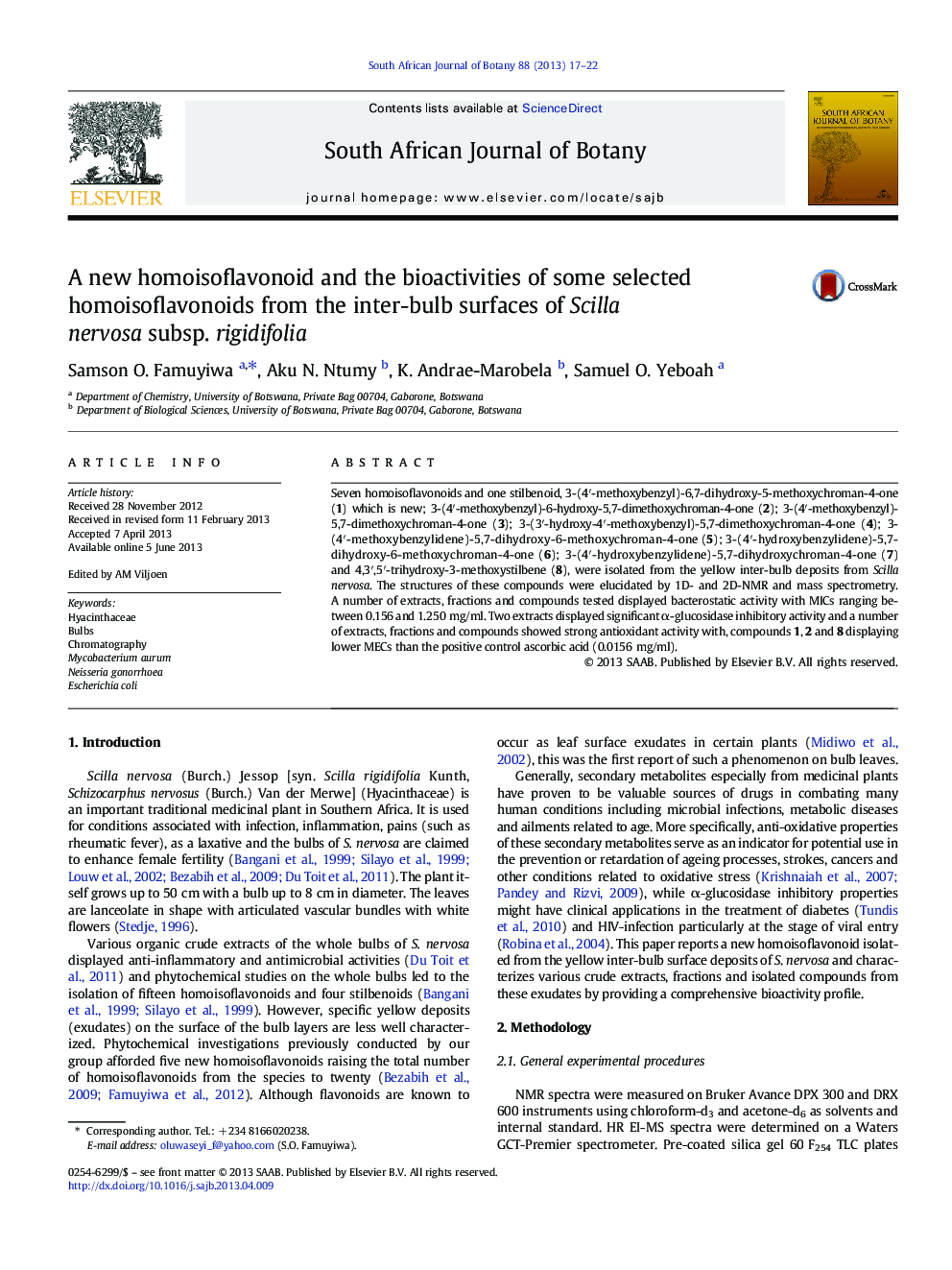| Article ID | Journal | Published Year | Pages | File Type |
|---|---|---|---|---|
| 6379047 | South African Journal of Botany | 2013 | 6 Pages |
â¢Îthylacetate fraction of Scilla nervosa was subjected to chromatographic separation.â¢One new homoisoflavonoid was isolated and characterized using NMR and MS.â¢Îxtracts and compounds of the plant were subjected to biological assays.â¢Yellow deposit had broader antimicrobial spectrum than the washed bulbs.â¢Stilbenoid from the yellow deposit is more potent than ascorbic acid.
Seven homoisoflavonoids and one stilbenoid, 3-(4â²-methoxybenzyl)-6,7-dihydroxy-5-methoxychroman-4-one (1) which is new; 3-(4â²-methoxybenzyl)-6-hydroxy-5,7-dimethoxychroman-4-one (2); 3-(4â²-methoxybenzyl)-5,7-dimethoxychroman-4-one (3); 3-(3â²-hydroxy-4â²-methoxybenzyl)-5,7-dimethoxychroman-4-one (4); 3-(4â²-methoxybenzylidene)-5,7-dihydroxy-6-methoxychroman-4-one (5); 3-(4â²-hydroxybenzylidene)-5,7-dihydroxy-6-methoxychroman-4-one (6); 3-(4â²-hydroxybenzylidene)-5,7-dihydroxychroman-4-one (7) and 4,3â²,5â²-trihydroxy-3-methoxystilbene (8), were isolated from the yellow inter-bulb deposits from Scilla nervosa. The structures of these compounds were elucidated by 1D- and 2D-NMR and mass spectrometry. A number of extracts, fractions and compounds tested displayed bacterostatic activity with MICs ranging between 0.156 and 1.250 mg/ml. Two extracts displayed significant α-glucosidase inhibitory activity and a number of extracts, fractions and compounds showed strong antioxidant activity with, compounds 1, 2 and 8 displaying lower MECs than the positive control ascorbic acid (0.0156 mg/ml).
